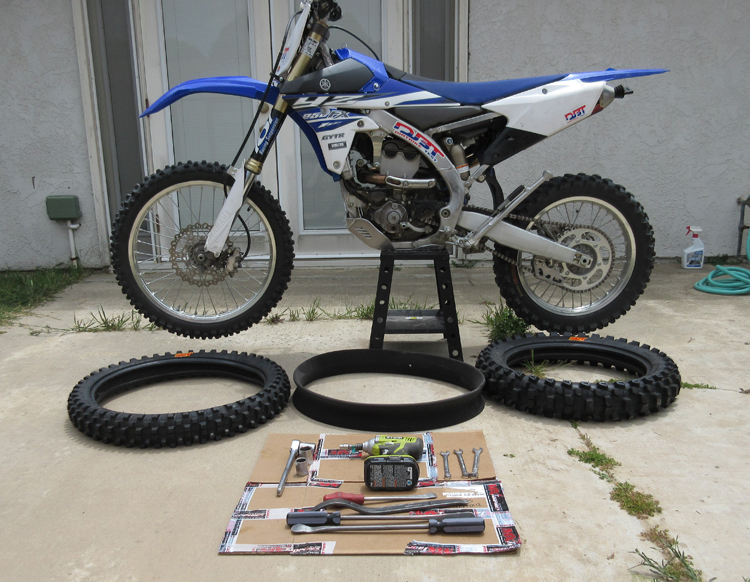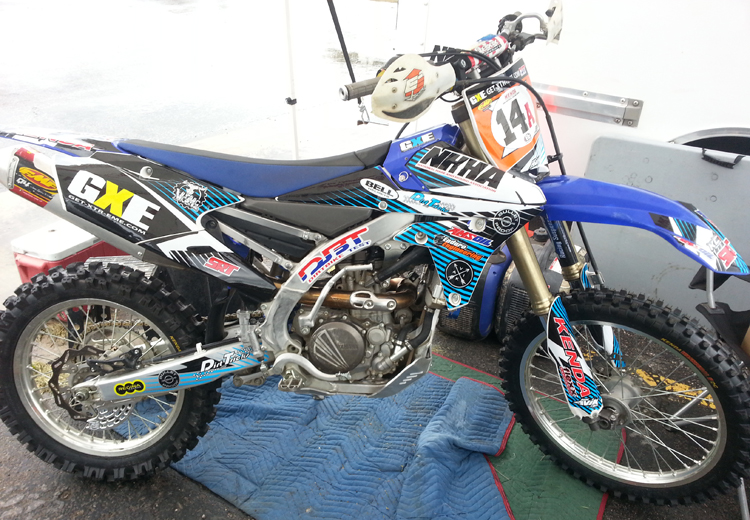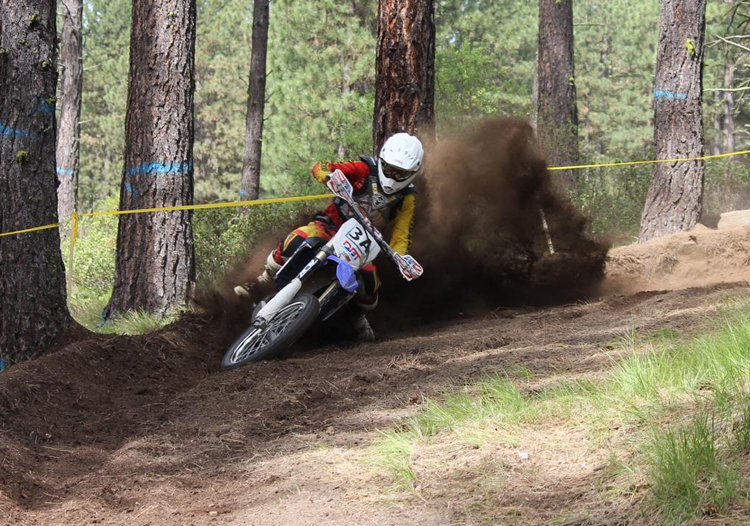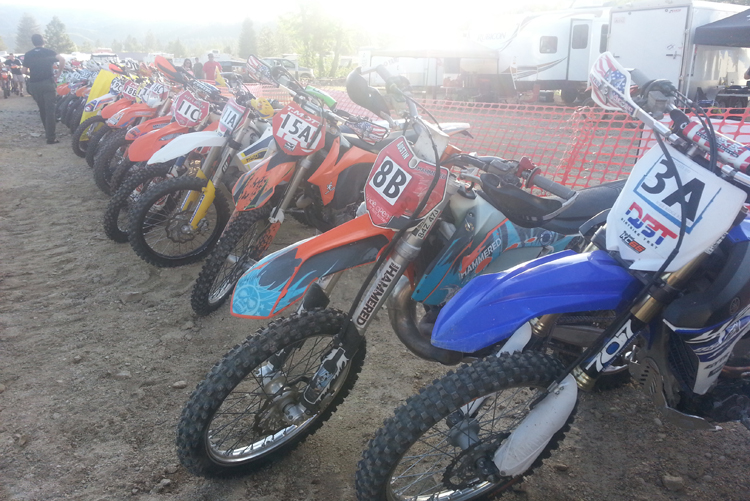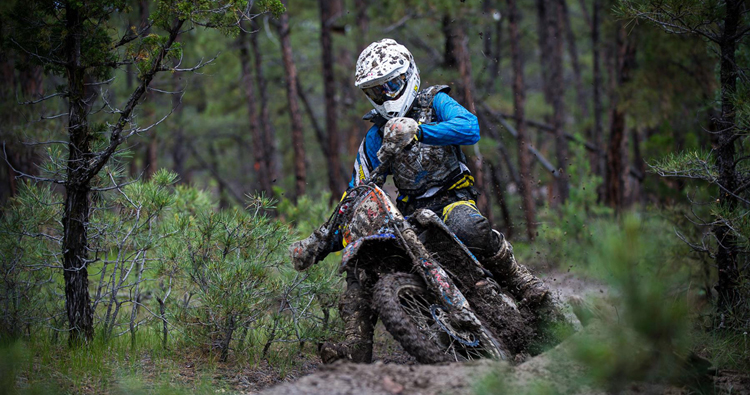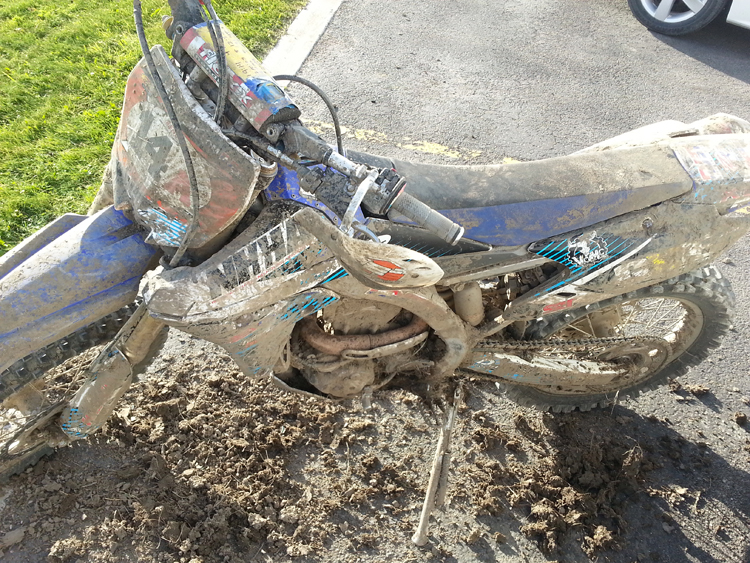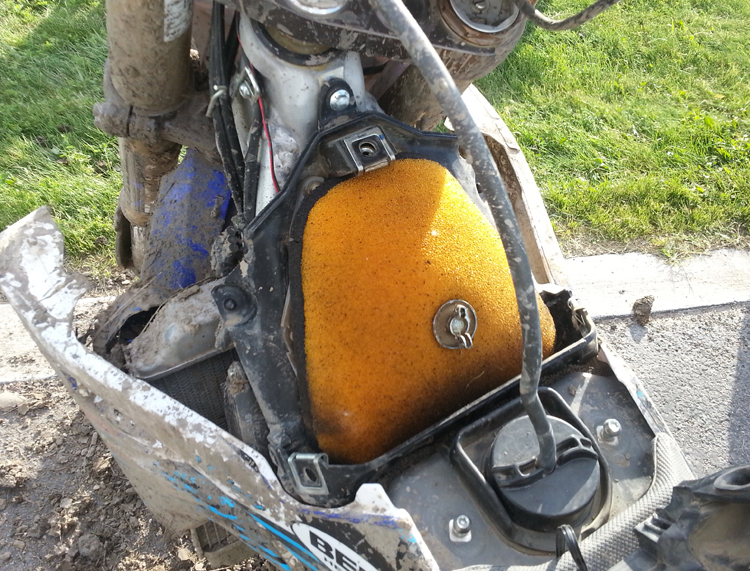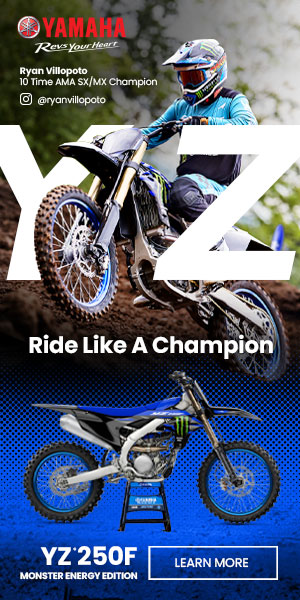Cover photo by Ian Reid – photos by Erek Kudla
This summer I took the YZ250FX that I have been testing for the last few months and went on a little racing tour. I’ve done a few local races including a desert scramble and two time keeping enduros but I really put the YZ through its paces marking course and getting it nice and warm with the stop, go, stop, go. That also includes marking and checking for the King of the Motos course where it really got put through the ringer! The bike handled it all like a champ with normal consistent maintenance – clean the air filter, lube the chain, change the oil and check the bolts.
Now it was time to put some more hard hours on it with the Idaho City 2 Day ISDE Qualifier followed by the Elkton, WY National Enduro. The first would be over 200 miles of single track in the mountains above Boise, ID, 100+ miles a day with only 15 minutes before and after each day to check the bike over. The second would be 95 miles of the sloppiest, muddiest, slipperiest terrain I have ever ridden in my life. Non-stop ruts, trees and clay that would push the bike to the limit with water and mud going everywhere it shouldn’t be in a motorcycle.
Before anything I had to get all the appropriate bling to set the bike up just for me. All the testing prior to this was “stock-ish” testing. Bullet Proof Designs Radiator Guards, Enduro Engineering Disc Guards, Avik Graphics, grips, Tube Saddles, Kenda Tires ( Washougal II front for the moist terrain of Idaho and the Millville II rear set to intermediate for the hard pack that is underneath), Enduro Engineering handguards, Regina chain… all the good stuff. The only things that didn’t make it in time were the Dirt Tricks Sprockets and IMS tank but it still worked well without them. Going 40+ miles is no problem on the stock tank and if you don’t need a “dry break” system there isn’t really a reason to upgrade unless you’re looking to do more than 50 miles in a single trip.
The biggest change that I made to the actual set up of the bike was to move the bars to the front mount in the triple clamps. My only complaint while testing the bike compared to a more familiar KTM was that it felt cramped while the KTM felt roomy. This change opened up the handling and made me much more comfortable on the bike for my 6-foot frame. It gave me a much more relaxed sitting position so I could ride more comfortably while still being able to move to attack position quickly. The down side to this was the bars were now over the fork bleeders. Easy fix, turn the fork tubes, hind-sight of course.
Luckily for me, once I got to Idaho I was already use to the bike because I was definitely not at home in the trees. The conditions were perfect after rain for almost an entire week leading up to the event. After the first test I was able to get comfortable and start pushing sine the bike was working so well. The 2nd test was my best one finishing 3rd in the E1 Class (125 2 stroke, 250 4 stroke) but I felt really good all day and the bike never missed a beat. It was able to lug through the tight stuff while still getting right back on top with a fan of the clutch or quick down shift.
At each of the 3 gas stops – all around 35 miles – both myself and Dillon Sheppard who was also on a brand new YZ250FX kept commenting on how the bike “seems like a hybrid car or something! It barely uses any gas!” It definitely seemed that way with our bikes only taking a gallon or so at each stop. The tight trails, low revs and EFI definitely helped keep the fuel consumption as efficient as possible. Dillon normally races a YZ250 two-stroke and this would be his first race on the four-stroke machine. He not only was comfortable enough on the machine to be competitive he would also go on to qualify for the Slovakia ISDE in the E1 class!
In much tighter races I have a tendency to drag the brakes so I usually burn up the rear brakes pretty quick. I was taught a long time ago to drag your brakes to set into corners easier so it’s just a habit I’m working on breaking. Being 100+ miles of ONLY single track I was a bit worried going into the event, especially with the last test being the tightest and steepest, but I never had the brakes fade once. Many other racers were changing brake pads at the gas stops or at the work period but we just checked them before putting the bike into impound and called it good. Some of this may have been the four-stroke compression braking but I was impressed.
At the end of the first day we went over the bike for the 15 minutes before having to go to impound. We took out the air filter to clean it as it was a bit dirty from the few sections of road we transferred on that was dry and dusty. Then I lubed the chain, checked the brakes and bolts and sent it to impound. The next morning I pushed it out; put the filter back in, double checked the bolts and was off. With the air filter not 100% dry I had to pull the cold start for the first time (I actually forgot it was there until Dillon pulled his Saturday) but it fired right up and was ready to go again!
In the last few miles of day one I had noticed the front end getting much stiffer but I thought it was just me getting super tired so I thought nothing of it. At the start of day two it was still like that so I immediately knew I needed to bleed the forks. They had pumped up so much in Day one that they were rock hard now. The only problem was when I switched the bars to the front mount I covered up the bleeder screws and now couldn’t get to them! I didn’t have enough time in any of the transfers to move the fork legs so I just had to deal with it. I was only able to go 50 of the 100 miles on Sunday after jamming my previously broken wrist several times; with the event being above my current physical capacity I would call it a day and head back to camp at the last place to ditch out. Once I got back to camp I moved the forks and bled them and it was definitely pumped up.
Heading to the National Enduro in South Eastern Wyoming I washed the bike, cleaned the filter, changed the oil, put another set of Kenda Tires (this time the Washougal II’s front and back to handle the sloppier conditions and clay terrain) on and was ready for the next race! The bike was prepared, but I definitely wasn’t! After dumping 4+ inches of rain the morning of the event we were in for a true mudder race! I didn’t do anything special to the bike to prepare for the mud besides putting clear tape over my route sheet and just got ready for the worst. This was another event that I was completely out of my comfort zone so I struggled just to stay on the bike through the entire first test that was the slickest one of the day.
At the end of each test I had to take a stick and dig out the mud from every place possible. The entire engine was encased in mud as one point with the chain looking like a belt more than a chain disappearing into a tunnel of mud and coming back out. The radiators were completely covered and the air box intake at the top of the shrouds was completely clogged. The tires looked like giant doughnuts. The brakes, both front and rear, were giant balls of mud on the side of the axles and the lower forks were encased in mud that was smoothed by the fork guards… it was definitely a sight to see!
With all of this the bike still ran great! Towards the end of each test it would start to struggle for air a bit with the mud backed in the intakes but once I cleaned it out in the transfer it was back to normal. The filter itself was barely used at the end of the event and still looked great. There were some very deep water crossings in the transfers and there was no trace of any kind of moisture in the air box. The extra weight of the mud made for very tricky going and definitely made the suspension ride much softer and bottom out easier. With the slow speeds of the terrain it was easy to get use to having to muscle the bike around much more. The brakes held up once again and neither of the fork seals blew out.
Surprisingly the one place the mud never packed in was the one place that everyone thought it would; the giant gap where the battery and electronics sit above the rear shock. That area stayed wide open during the entire event while the battery and starter never hiccuped the entire time.
After all was said and done I was definitely won over by the YZ250FX as a great all around race machine. It can putt-putt around the trails while also wicking it up and racing successfully with very little changes to the bike. I still don’t like two specific things about it. The gas cap location and the air box cover removal and replacement for race purposes are frustrating. While the gas cap is fine when you’re only going 40 miles at a time; it is nearly impossible to deal with in a race pit situation. I feel a ¾ turn or push/pop cap would be great, especially with the seat covering it anyway. The air box, while working amazingly when it comes to air flow and again is fine when you’re only going 40 miles at a time, would be extra frustrating in a quick-change long distance race situation and is a pain to deal with on the trail as well… once they get those 2 things sorted out I’ll be much happier overall.
The bike is getting all cleaned up and we’re going to put some more time on it. Then we’ll take a really good close look at what a year of use does to the YZ250FX and see how it is really holding up with a proper tear down and inspection.
